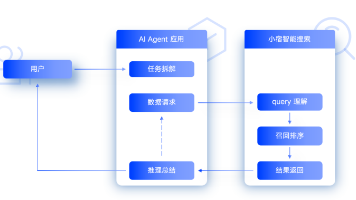箭头函数与普通函数的区别
普通函数适合作为对象的方法,因为this会动态绑定到调用对象。特性普通函数箭头函数语法function关键字=>语法this绑定动态绑定词法绑定arguments对象支持不支持(可使用剩余参数)构造函数支持不支持方法定义适合(this绑定到调用对象)不适合(this继承外层作用域)适用场景动态this、构造函数、方法定义词法this、简洁语法、回调函数。
·
箭头函数(Arrow Function)是 ES6 引入的一种新的函数语法,它相比于普通函数(Function)有一些显著的区别。这些区别不仅体现在语法上,还体现在行为特性上(如 this 的绑定、arguments 对象等)。
1. 语法区别
1.1 普通函数
- 使用
function关键字定义。 - 语法相对冗长。
代码示例:
function add(a, b) {
return a + b;
}
console.log(add(1, 2)); // 输出: 3
1.2 箭头函数
- 使用
=>语法定义。 - 语法简洁,适合单行函数。
代码示例:
const add = (a, b) => a + b;
console.log(add(1, 2)); // 输出: 3
2. this 的绑定
2.1 普通函数
- 普通函数的
this是动态绑定的,取决于函数的调用方式。 - 在全局作用域中,
this指向window(浏览器)或global(Node.js)。 - 在对象方法中,
this指向调用该方法的对象。
代码示例:
const obj = {
value: 42,
getValue: function() {
return this.value;
}
};
console.log(obj.getValue()); // 输出: 42
const getValue = obj.getValue;
console.log(getValue()); // 输出: undefined(this 指向全局对象)
2.2 箭头函数
- 箭头函数的
this是词法绑定的,继承自外层作用域的this。 - 箭头函数没有自己的
this,因此不能通过call、apply或bind改变this。
代码示例:
const obj = {
value: 42,
getValue: function() {
const innerFunc = () => this.value;
return innerFunc();
}
};
console.log(obj.getValue()); // 输出: 42
const getValue = obj.getValue;
console.log(getValue()); // 输出: 42(this 继承自外层作用域)
3. arguments 对象
3.1 普通函数
- 普通函数内部可以使用
arguments对象访问所有传入的参数。 arguments是一个类数组对象。
代码示例:
function sum() {
let total = 0;
for (let i = 0; i < arguments.length; i++) {
total += arguments[i];
}
return total;
}
console.log(sum(1, 2, 3)); // 输出: 6
3.2 箭头函数
- 箭头函数没有自己的
arguments对象。 - 如果需要访问参数,可以使用剩余参数(Rest Parameters)。
代码示例:
const sum = (...args) => {
let total = 0;
for (let i = 0; i < args.length; i++) {
total += args[i];
}
return total;
};
console.log(sum(1, 2, 3)); // 输出: 6
4. 构造函数
4.1 普通函数
- 普通函数可以作为构造函数使用,通过
new关键字创建实例。 - 构造函数内部的
this指向新创建的实例。
代码示例:
function Person(name) {
this.name = name;
}
const person = new Person('Alice');
console.log(person.name); // 输出: Alice
4.2 箭头函数
- 箭头函数不能作为构造函数使用,使用
new调用箭头函数会抛出错误。 - 箭头函数没有
prototype属性。
代码示例:
const Person = (name) => {
this.name = name; // 报错:箭头函数没有 this
};
const person = new Person('Alice'); // 报错:Person is not a constructor
5. 方法定义
5.1 普通函数
- 普通函数适合作为对象的方法,因为
this会动态绑定到调用对象。
代码示例:
const obj = {
value: 42,
getValue: function() {
return this.value;
}
};
console.log(obj.getValue()); // 输出: 42
5.2 箭头函数
- 箭头函数不适合作为对象的方法,因为
this会继承外层作用域,而不是绑定到调用对象。
代码示例:
const obj = {
value: 42,
getValue: () => this.value
};
console.log(obj.getValue()); // 输出: undefined(this 指向全局对象)
6. 适用场景
6.1 普通函数的适用场景
- 需要动态绑定
this的场景(如对象方法、构造函数)。 - 需要使用
arguments对象的场景。 - 需要作为构造函数使用的场景。
6.2 箭头函数的适用场景
- 需要词法绑定
this的场景(如回调函数、事件处理函数)。 - 需要简洁语法的场景(如单行函数)。
- 不需要
arguments对象的场景。
7. 总结
| 特性 | 普通函数 | 箭头函数 |
|---|---|---|
| 语法 | function 关键字 |
=> 语法 |
this 绑定 |
动态绑定 | 词法绑定 |
arguments 对象 |
支持 | 不支持(可使用剩余参数) |
| 构造函数 | 支持 | 不支持 |
| 方法定义 | 适合(this 绑定到调用对象) |
不适合(this 继承外层作用域) |
| 适用场景 | 动态 this、构造函数、方法定义 |
词法 this、简洁语法、回调函数 |
更多推荐
 已为社区贡献1条内容
已为社区贡献1条内容








所有评论(0)